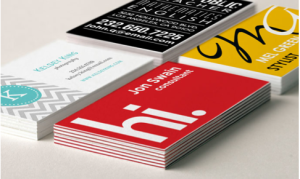First Impressions
Friday, June 12th, 2015
They say you only have one chance to make a first impression. This is a subject that keeps coming up lately – in conversations, at meetings, in emails and in blog posts I’ve been reading. Judging by the huge amount of comments and responses to these, this is clearly something that’s floating up to the top of everyone’s consciousness right now.
As a publicist, I am constantly initiating contacts with new journalists, writers, editors and bloggers; for me, that first contact doesn’t hold much fear. Through many years of practice – first as a TV movie executive and then as a publicist – I’ve gotten comfortable and assured about how I will come off in any initial encounter. But for a lot of people, the idea of making a cold call to a magazine, walking into a meeting full of strangers, talking to vendors or buyers in a trade show booth, meeting a bunch of new people at a networking event, or getting up and speaking in or to a group is enough to give them the shakes.
I think that part of this is because people aren’t always sure of what kind of first impression they are going to make, or they aren’t sure of what creates a positive first impression. While the ingredients of a good first impression may seem elementary to some, to others, they really are a mystery. From all the conversations, posts and emails I’ve seen lately, there are a lot of people out in the business world who apparently have no idea of how to present themselves. So here are a few things that seem to be universal:
In person:
1. Smile! Be present (not distracted)
2. Have a good handshake (not a bone-crusher, just nice, firm and DRY)
3. Look the other person in the eye when being introduced
4. Ask what they do or another question that elicits information about them and actually LISTEN to what they say – be interested
5. Wear clothing that is appropriate to the occasion. Be well groomed (yes, this means check your teeth and nails; shoes should be polished and in good repair – people do notice)
6. Have confidence in yourself
7. Have a fabulous business card
8. Before you go to a meeting, make sure you’ve done your research; know who you’re meeting, know about their business and how you can be of service to them or how you can fit in with them
On the phone:
1. Do your research beforehand and make sure you are calling the right person; get the correct pronunciation of their name if it is uncommon or unfamiliar; find out if they’re a man or woman if they have a sexually-ambiguous name (yes this happens)
2. Relax and smile; they can hear it in your voice. Be present (don’t multitask)
3. Introduce yourself – say who you are, what you do and why you are calling
4. Make sure the person has time to chat with you – be brief and respectful of their time
5. Be prepared – don’t try to pitch or sell if you don’t have the required facts; you don’t want to have to go back later with different figures or other information. It’s not good if you don’t know what you’re talking about!
6. When you are done, thank the person and get off the phone – don’t linger
In correspondence
1. Make sure you have their proper name, title and contact information
2. Spell check! Spell check! Spell check! (and grammar check, too)
3. Be brief and to the point, have your pitch and pertinent info right at the top – don’t bury the lead; include all necessary information.
4. In printed/mailed correspondence, make sure all printing is clear, straight and perfect; paper stocks should be of excellent quality; nothing makes a bad first impression like misspelled, mis-printed, crooked or creased materials – yes, this includes address labels and stamps
Keep their good opinion:
1. Follow up appropriately and in a timely manner.
While you (hopefully) already know and do all of these things, it never hurts to get a few reminders. Now get out there and make a fabulous first impression!
If you have any favorite first impression tips, let us know!



